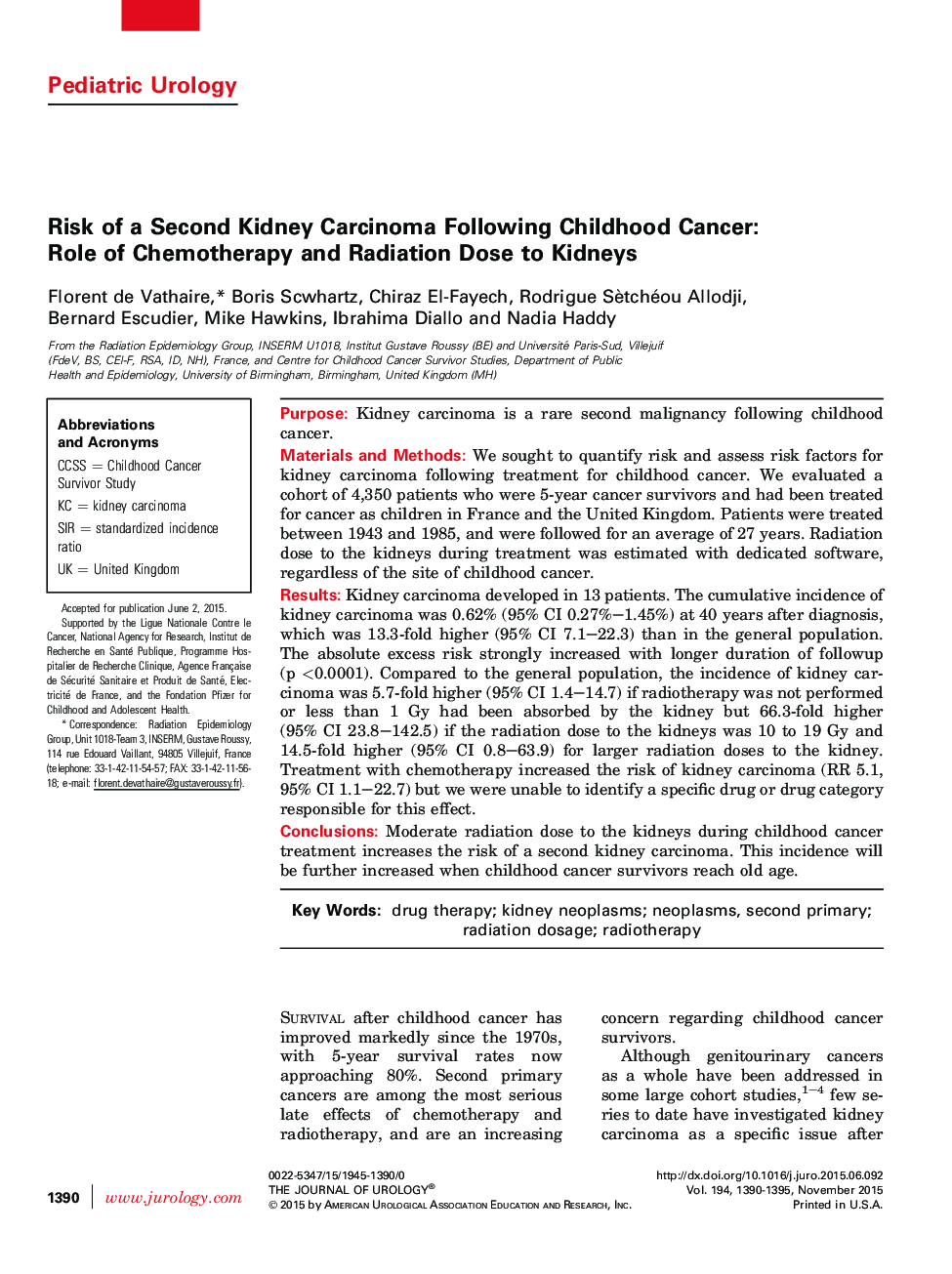| Article ID | Journal | Published Year | Pages | File Type |
|---|---|---|---|---|
| 3861036 | The Journal of Urology | 2015 | 6 Pages |
PurposeKidney carcinoma is a rare second malignancy following childhood cancer.Materials and MethodsWe sought to quantify risk and assess risk factors for kidney carcinoma following treatment for childhood cancer. We evaluated a cohort of 4,350 patients who were 5-year cancer survivors and had been treated for cancer as children in France and the United Kingdom. Patients were treated between 1943 and 1985, and were followed for an average of 27 years. Radiation dose to the kidneys during treatment was estimated with dedicated software, regardless of the site of childhood cancer.ResultsKidney carcinoma developed in 13 patients. The cumulative incidence of kidney carcinoma was 0.62% (95% CI 0.27%–1.45%) at 40 years after diagnosis, which was 13.3-fold higher (95% CI 7.1–22.3) than in the general population. The absolute excess risk strongly increased with longer duration of followup (p <0.0001). Compared to the general population, the incidence of kidney carcinoma was 5.7-fold higher (95% CI 1.4–14.7) if radiotherapy was not performed or less than 1 Gy had been absorbed by the kidney but 66.3-fold higher (95% CI 23.8–142.5) if the radiation dose to the kidneys was 10 to 19 Gy and 14.5-fold higher (95% CI 0.8–63.9) for larger radiation doses to the kidney. Treatment with chemotherapy increased the risk of kidney carcinoma (RR 5.1, 95% CI 1.1–22.7) but we were unable to identify a specific drug or drug category responsible for this effect.ConclusionsModerate radiation dose to the kidneys during childhood cancer treatment increases the risk of a second kidney carcinoma. This incidence will be further increased when childhood cancer survivors reach old age.
